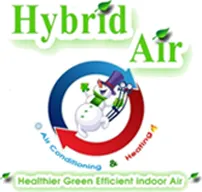Whether you are building a new home, upgrading your current air conditioning system, or simply looking for ways to improve your home’s comfort and energy efficiency, understanding the fundamentals of AC installation is crucial in making an informed decision. Proper AC installation requires careful planning and execution, as well as a consideration of multiple factors, such as your home’s size, layout, insulation quality, and location.
Continue reading as we discuss the essential steps to ensure a successful AC installation, share best practices to maximize your unit’s performance and lifespan and explore the various system types available to homeowners. Our professionals are also readily available to assist you throughout the AC installation process, ensuring a smooth and efficient experience tailored to your specific needs.
Essential Steps in the AC Installation Process
- Assessing Cooling Requirements: Before AC installation, it’s essential to evaluate the cooling capacity needed to sufficiently cool your home. Factors such as the size and layout of your home, insulation quality, and local climate conditions should be considered in determining the appropriate system capacity for your cooling needs.
- Selecting the Right AC System: With numerous options available, choosing the right AC system can be a daunting task. Our professionals can assess your home’s unique needs and recommend the most suitable system type for optimal comfort and efficiency.
- Preparing the Space: Prior to installation, it’s crucial to prepare a suitable location for both the indoor and outdoor components of your AC system. Ensure that the area is clean, accessible, and free from dust or debris, as well as any potential obstructions that could hinder efficient airflow.
- Professional Installation: Our skilled technicians will thoroughly inspect your space, confirming the proper placement and installation of your AC system. Following a meticulous procedure, our team will ensure your unit is correctly installed, tested, and optimized for peak performance.
AC Installation Best Practices
- Proper Sizing: Ensuring the system’s cooling capacity matches your home’s specific needs is crucial in avoiding inefficiencies or discomfort. An over- or under-sized AC system can lead to insufficient cooling, higher energy costs, or even reduced system lifespan.
- Ductwork Inspection: Prior to AC installation, inspecting and sealing any leaks or damage in your existing ductwork can help maximize the efficiency of your new system and prevent energy loss.
- Quality Equipment and Materials: Investing in high-quality equipment and materials can result in a more efficient and long-lasting AC system. Our professionals will provide recommendations for system models and components that meet your needs and budget.
- Schedule a Professional Evaluation: Before installation, it’s essential to schedule a professional evaluation by our experienced technicians. This evaluation ensures that all relevant factors are considered during the installation process and any potential issues are addressed beforehand.
Understanding AC System Types
- Central Air Conditioning: Central AC systems are among the most common and effective options for maintaining a comfortable home environment. These systems feature an outdoor unit housing a compressor and condenser and an indoor unit containing an evaporator and air handler. The system cools and distributes air throughout the home via a duct system, ensuring consistent temperatures across each room.
- Ductless Mini-Split Systems: Ideal for homes without preexisting ductwork or those looking for energy-efficient cooling solutions, ductless mini-split systems consist of individual air handlers mounted within each room or zone and a corresponding outdoor compressor and condenser unit. This allows for precise temperature control and improved energy efficiency, as duct losses are eliminated and zones can be cooled independently based on need.
- Heat Pumps: Heat pumps use the principle of heat exchange to provide both heating and cooling for your home. They are an energy-efficient and cost-effective solution, especially in regions with moderate climates. During warm months, heat pumps extract heat from your home and transfer it outdoors, while in cold months, they draw heat from the outdoor air and move it indoors to maintain comfortable temperatures.
- Packaged HVAC Units: These compact systems are designed for homes with limited installation space. Packaged units house all major components, including the compressor, condenser, and evaporator, within a single outdoor cabinet. This system type is connected to your home’s ductwork, providing efficient cooling and heating capabilities.
Conclusion
As you consider your AC installation, understanding the essential steps, best practices, and various system types is key to ensuring a successful outcome. Partner with our professionals at Hybrid Air, Air Conditioning & Heating Inc for a seamless, efficient AC installation in Pico Rivera, CA, tailored to your specific requirements.
By following the recommended steps and best practices and selecting the most suitable system type for your home, you can achieve a comfortable, energy-efficient, and optimally functioning cooling solution. Reach out to our expert team today to schedule an assessment and prepare for a refreshing, well-cooled home for years to come.



